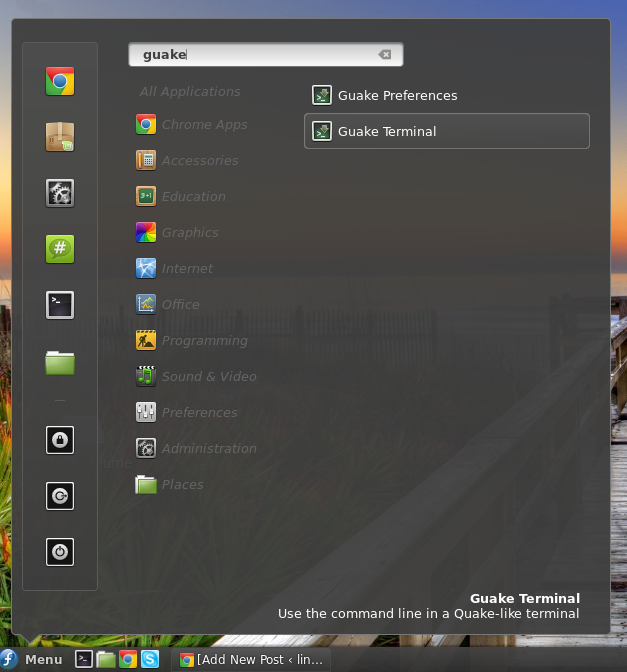

- Install guake on debian how to#
- Install guake on debian install#
- Install guake on debian software#
- Install guake on debian download#
To start Guake-Indicator, type Guake Indicator in your Unity Dash.
Install guake on debian install#
To install Guake Indicator 0.2 on Ubuntu 14.04 Trusty Tahr and Ubuntu 13.10 Saucy Salamander, you have to add the needed ppa to your system, update the local repository index and install the guake-indicator package. The latest version available is Guake Indicator 0.2, which has been released a while ago. To adjust the Guake settings, open your Dash and type Guake Preferences.Īlso, Guake Indicator is an open-source AppIndicator for the Guake terminal that helps the users to easily perform SSH connections to your favorite hosts, run some commands and add both SSH hosts or tasks to be performed locally, via Guake. Just make sure that you are using an up to date system and install the guake package: The latest version available is Guake 0.4.4, which is available via the default repositories of Ubuntu 14.04 and Ubuntu 13.10, so installing it is easy. The users can open and hide it, by pressing a single keystroke only, which was configured to do such a thing. Snaps are discoverable and installable from the Snap Store, an app store with an audience of millions. They update automatically and roll back gracefully. Snaps are applications packaged with all their dependencies to run on all popular Linux distributions from a single build. Applications on the panel (wicd, guake, etc) as a normal user we do. As you may know, Guake is an open-source drop-down terminal emulator, inspired by the Quake console and written in Python and C. Enable snaps on Debian and install guake-cl. Have installed Debian without graphic environment preferably. In the report that follows, you should see a green status that says active (running).Hello Linux Geeksters.

Enter the following command to make sure the Apache service is running: systemctl status apache2 The process can take a few moments to complete. Since the global repository of Debian does not provide any of the latest versions of CMake so, to proceed with the installation, we will be downloading it first.
Install guake on debian download#
To install the latest version of CMake in your computer system follow these steps: Step 1: Download CMake. Open a terminal window, and install Apache by entering the following command: sudo apt install apache2 -y Installation of the Latest Version of CMake.
Install guake on debian software#
Step 1.2: Install ApacheĪpache is the webserver software that processes requests and transmits data over an HTTP network. You now have the tools you need to install a LAMP stack and phpMyAdmin. Enter the following command to install the wget tool: sudo apt install wget -y The wget utility allows you to download files directly from the terminal window. Installing outdated software packages is a severe security liability. Step 1.1: Update Software Packages and Install wgetĪccess your terminal window, and update your software package lists using the following command: sudo apt update If you already have a LAMP stack installed, you can skip directly to the Download phpMyAdmin section.
Install guake on debian how to#
This section shows you how to install the supporting software to turn your Debian 10 system into a web server. You need a functioning web server for phpMyAdmin to work properly.

Enter Y and then hit enter Guake will then be installed on your system. The system might prompt you with a Y/n option to continue the installation.


 0 kommentar(er)
0 kommentar(er)
